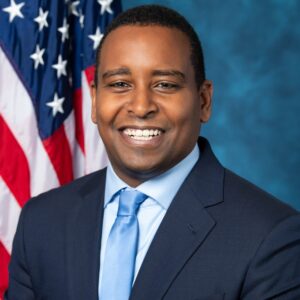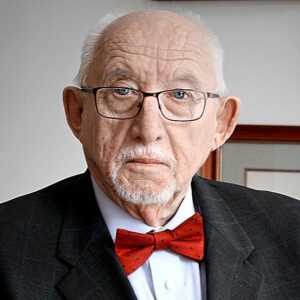Doing Less with Less: How a four-day school week affects student learning and the teacher workforce
Overview:
In “Doing Less with Less: How a four-day school week affects student learning and the teacher workforce,” Keystone Policy Center provides both a quantitative and qualitative examination of Colorado’s four-day school week phenomenon.
The first four-day districts came online in Colorado in the early 1980s, after the state legislature passed a law allowing more calendar flexibility for public schools. Since then, the phenomenon has grown steadily, mostly in small, rural districts. Some districts have added hours to each school day to meet state minimum requirements of 1,080 hours in school per year. Others have pared down school time to be closer to that annual minimum.
The four-day trend shows signs of spreading to larger districts as well. Pueblo City 60, a district of 15,000 kids, went to a four-day week in 2018-19. And starting with that same school year, Brighton 27J, just northeast of Denver, with just over 23,000 students, became the largest school district in the country to switch to a four-day week.
In interviews with superintendents across Colorado, recruiting and retaining teachers emerged as far and away the biggest factor for switching to a four-day week. Almost no one said the change was necessarily in the academic interest of students. Some argued that the effect on academic achievement has been negligible, and said that the positive impact on student mental health has outweighed any academic concerns. Initial hopes that cutting the number of days would result in budget savings proved to be a chimera.
The report gives a brief review of national research on the four-day school week movement. Next, using Colorado Department of Education data, it delves into the impacts on student achievement, teacher talent, and enrollment. It then explores how the four-day school week has affected districts in rural southwestern Colorado and in the Denver metro area, focused on Brighton 27J and its neighbor to the west, Adams 12.
Finally, the report discusses policy implications of the findings, as well as some recommendations. The four-day school week has strong proponents and detractors, and (spoiler alert) the data in Colorado gives neither side a clear upper hand (although national research is more conclusive).
Summary of Recommendations
Doing Less with Less provides some useful recommendations for examining the practice of a four-day school week:
- The Colorado Department of Education should create a panel composed of experts and stakeholders to investigate and provide recommendations around the four-day school week. The panel’s work would be to ensure that all students whether in four-day or five-day school districts are receiving the support necessary to enable them to meet the state’s education standards.
- Create a rigorous process for state approval of four-day school weeks, with the core question being whether this change will improve student outcomes. The process should not, as is currently the case, be a rubber stamp without a review of the impacts on student learning.
- Study how instructional time is used to enable students to reach state standards in four- and five-day instructional settings. Are there best practices for use of instructional time for different grades and content in four-and five-day contexts? ? What are these and how are Colorado school districts using them?
- Provide examples of best practices and support in fifth-day programming for districts using a four-day week. Should districts be required to provide programming on the fifth day and should it be educational? If so, what are the standards for this programming?
Interactive Map
Keystone has also published an interactive data map, in partnership with the Colorado Sun, to accompany this report. The map details the academic performance, enrollment, CMAS scores, average teacher salary, and teacher turnover throughout the state. The map also highlights which districts utilize a four- or five-day school week. Click the image below to access the map.



 Effective March 1, 2025, Thomas J. Vilsack, former United States Secretary of Agriculture and Governor of Iowa, became the first Chief Executive Officer for the World Food Prize Foundation. In this new role, Governor Vilsack is focusing on expanding the Foundation’s global network, and will further position the Foundation as a leader in addressing global food and nutrition insecurity, continuing his lifetime of public service.
Effective March 1, 2025, Thomas J. Vilsack, former United States Secretary of Agriculture and Governor of Iowa, became the first Chief Executive Officer for the World Food Prize Foundation. In this new role, Governor Vilsack is focusing on expanding the Foundation’s global network, and will further position the Foundation as a leader in addressing global food and nutrition insecurity, continuing his lifetime of public service. Shelby Coffey III is a distinguished journalist, media executive, and thought leader whose career has helped shape the landscape of American news and public discourse. Over several decades, Coffey has held some of the most influential roles in journalism, including serving as editor of the Los Angeles Times, executive vice president of ABC News, and deputy managing editor of The Washington Post. His editorial leadership extended to key roles as president of CNN Financial News, editor of the Dallas Times Herald, and U.S. News & World Report.
Shelby Coffey III is a distinguished journalist, media executive, and thought leader whose career has helped shape the landscape of American news and public discourse. Over several decades, Coffey has held some of the most influential roles in journalism, including serving as editor of the Los Angeles Times, executive vice president of ABC News, and deputy managing editor of The Washington Post. His editorial leadership extended to key roles as president of CNN Financial News, editor of the Dallas Times Herald, and U.S. News & World Report. Jerry Steiner has spent 40 years involved in agriculture following growing up on a Wisconsin dairy farm. He began his career with Monsanto, in multiple business leadership roles. From 2003-2013 he served as a member of the Executive team, as the company’s Executive Vice President of Sustainability and Corporate Affairs. He led the company’s global Government, Public and Industry Affairs teams across the 70 countries where Monsanto conducts business. This experience got Jerry connected to the Keystones centers work in agriculture. Key among his responsibilities were shaping the company’s public policy and building partnerships aimed at helping farmers around the world produce more food, while conserving valuable resources like water and energy. Two unique partnership that developed under his leadership were drought tolerant corn with 5 African countries, CIMMYT and the Gates foundation, and a building a sustainable business model in Brazil with the value chain leading to significant multi-company investment and soybean varieties that can protected themselves.
Jerry Steiner has spent 40 years involved in agriculture following growing up on a Wisconsin dairy farm. He began his career with Monsanto, in multiple business leadership roles. From 2003-2013 he served as a member of the Executive team, as the company’s Executive Vice President of Sustainability and Corporate Affairs. He led the company’s global Government, Public and Industry Affairs teams across the 70 countries where Monsanto conducts business. This experience got Jerry connected to the Keystones centers work in agriculture. Key among his responsibilities were shaping the company’s public policy and building partnerships aimed at helping farmers around the world produce more food, while conserving valuable resources like water and energy. Two unique partnership that developed under his leadership were drought tolerant corn with 5 African countries, CIMMYT and the Gates foundation, and a building a sustainable business model in Brazil with the value chain leading to significant multi-company investment and soybean varieties that can protected themselves. Jennifer Morris is the Chief Executive Officer of The Nature Conservancy, leading a team of nearly 6,000 staff working in more than 80 countries and territories tackling the dual crises of the
Jennifer Morris is the Chief Executive Officer of The Nature Conservancy, leading a team of nearly 6,000 staff working in more than 80 countries and territories tackling the dual crises of the  Congressman Joe Neguse represents Colorado’s 2nd District in the U.S. House of Representatives. He was elected to his first term in November 2018, becoming the first Black Member of Congress in Colorado history. In December 2022, Rep. Neguse was elected by his colleagues to serve as Chair of the Democratic Policy and Communications Committee (DPCC), becoming the first Coloradan to serve in a senior elected leadership role in the House in over 85 years. He serves on the Natural Resources and Judiciary Committees, and was also appointed by House Minority Leader Hakeem Jeffries to serve as one of four Democrats on the prestigious Rules Committee. Rep. Neguse serves as Ranking Member on the House Subcommittee on Federal Lands, which he previously Chaired in the 117th Congress.
Congressman Joe Neguse represents Colorado’s 2nd District in the U.S. House of Representatives. He was elected to his first term in November 2018, becoming the first Black Member of Congress in Colorado history. In December 2022, Rep. Neguse was elected by his colleagues to serve as Chair of the Democratic Policy and Communications Committee (DPCC), becoming the first Coloradan to serve in a senior elected leadership role in the House in over 85 years. He serves on the Natural Resources and Judiciary Committees, and was also appointed by House Minority Leader Hakeem Jeffries to serve as one of four Democrats on the prestigious Rules Committee. Rep. Neguse serves as Ranking Member on the House Subcommittee on Federal Lands, which he previously Chaired in the 117th Congress. Llewellyn King was born in Southern Rhodesia, now Zimbabwe. He went into journalism as soon as he turned 16, stringing for Time magazine and United Press in Africa.
Llewellyn King was born in Southern Rhodesia, now Zimbabwe. He went into journalism as soon as he turned 16, stringing for Time magazine and United Press in Africa. Steven Williams is the Chief Executive Officer of PepsiCo North America, overseeing a more than $48 billion business that spans PepsiCo’s Foods and Beverage operating units. His leadership encompasses more than 125,000 associates and over 900 locations across the U.S. and Canada. Steven joined PepsiCo in 2001 as part of PepsiCo’s acquisition of the Quaker Oats Company, which he joined in 1997, and has held leadership positions of increased responsibility since.
Steven Williams is the Chief Executive Officer of PepsiCo North America, overseeing a more than $48 billion business that spans PepsiCo’s Foods and Beverage operating units. His leadership encompasses more than 125,000 associates and over 900 locations across the U.S. and Canada. Steven joined PepsiCo in 2001 as part of PepsiCo’s acquisition of the Quaker Oats Company, which he joined in 1997, and has held leadership positions of increased responsibility since.